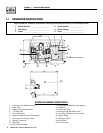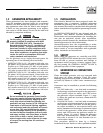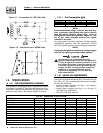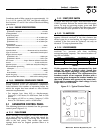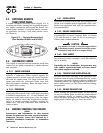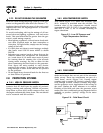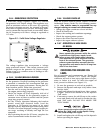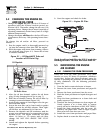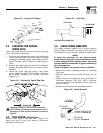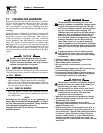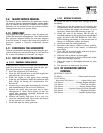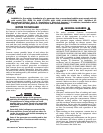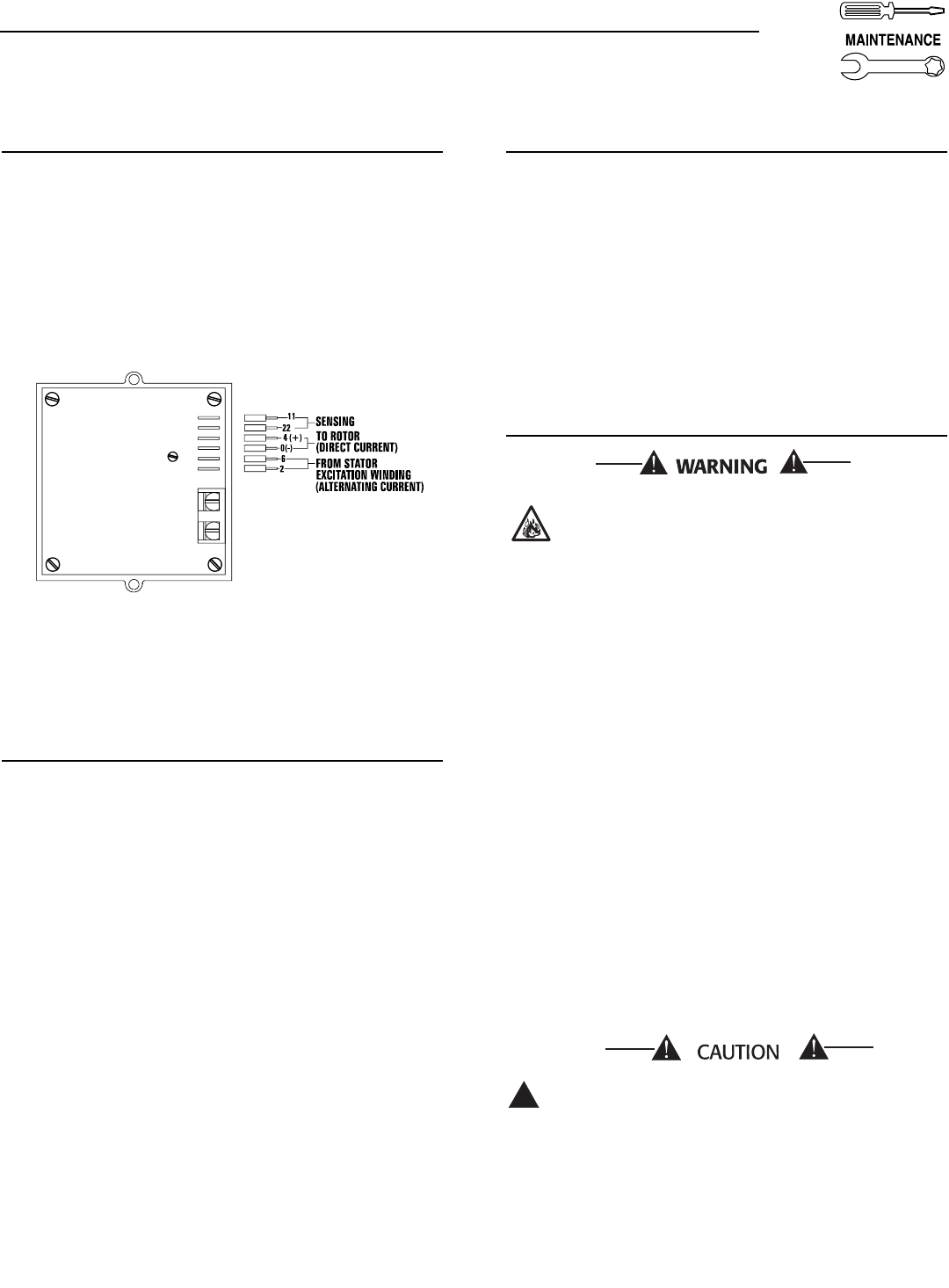
Generac
®
Power Systems, Inc. 11
Section 3 – Maintenance
QUIETPACT 55, 65, and 75 Recreational Vehicle Generators
2.8.4 OVERVOLTAGE PROTECTION
A solid-state voltage regulator (Figure 2.5) controls
the generator’s AC output voltage. This regulator sup-
plies an excitation current to the rotor. By regulating
the rotor’s excitation current, the strength of its mag-
netic field is regulated and, in turn, the voltage deliv-
ered to connected electrical loads is controlled. When
the AC frequency is 60 Hertz, voltage is regulated at
115 volts.
Figure 2.5 – Solid State Voltage Regulator
The voltage regulator also incorporates a “voltage
surge protection circuit.” This circuit prevents trou-
blesome surges in the generator AC output voltage.
Voltage surge is a common cause of damage to elec-
tronic equipment.
2.8.5 25-HOUR BREAK-IN PERIOD
The first 25 hours of operation is the break-in period
for the generator. Properly breaking in the generator
is essential to minimize fuel consumption and pro-
vide maximum engine performance. During this 25-
hour break-in period, follow this procedure:
• Run the unit at varying electrical loads to help seat
the engine piston rings properly.
• Check the engine oil level frequently. Add oil if
needed. It is normal for the generator engine to
consume more oil than is normal until the piston
rings have properly seated.
• For the 75-hour operation following the break-in
period, avoid light electrical loads. Load the
generator at 50 percent (or more) of its rated
wattage capacity. Repeated light loads during these
75 hours can cause improper seating of engine pis-
ton rings, resulting in blowby and high oil con-
sumption.
• After operating the unit for 25 hours, complete the
tasks recommended under Section 2.8.6.
2.8.6 25-HOUR CHECK-UP
After the 25-hour break-in period, contact a Generac
Authorized Service Dealer for the following mainte-
nance. (The vehicle owner is responsible for any
charges relating to normal unit maintenance.)
• Change the engine crankcase oil and oil filter.
• Check all fluid levels.
• Inspect the cooling and ventilation openings.
• Check the engine ignition system.
• Inspect the entire electrical system.
• Inspect the engine exhaust system.
2.8.7 OPERATION IN HIGH GRASS
OR BRUSH
Never operate the generator while the vehicle
is parked over high grass, weeds, brush,
leaves or any other combustible substance.
Such materials can ignite and burn from the
heat of the exhaust system. The generator
exhaust system becomes extremely hot dur-
ing operation and remains hot for a long time
after it has shut down.
3.1 CHECKING THE ENGINE OIL
LEVEL
For oil capacities and requirements, see “Engine Oil
Requirements,” Section 1.6.2. Check the engine
crankcase oil level at least every eight hours of oper-
ation, or before it is used. To check the engine oil
level, proceed as follows (see Figure 3.1):
1. Be sure the generator is as level as possible.
2. Remove the dipstick and wipe it dry with a clean,
lint-free cloth.
3. Install and tighten the dipstick cap; then, remove
it again. The oil level should be at the dipstick
“Full” mark.
4. If necessary, remove the oil fill cap on the rocker
cover and slowly add oil until it reaches the dip-
stick “Full” mark. DO NOT FILL ABOVE THE
“FULL” MARK.
Never operate the engine with the oil level
below the “Add” mark on the dipstick. Doing
this could damage the engine.
5. Install and tighten the oil fill cap and the dipstick
before operating the engine.
!
◆
◆
◆
◆




